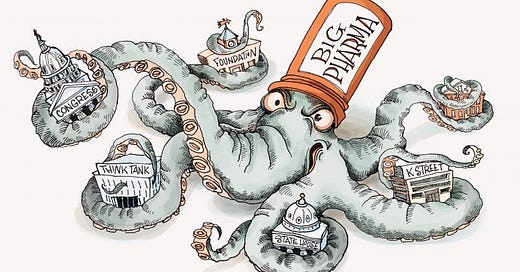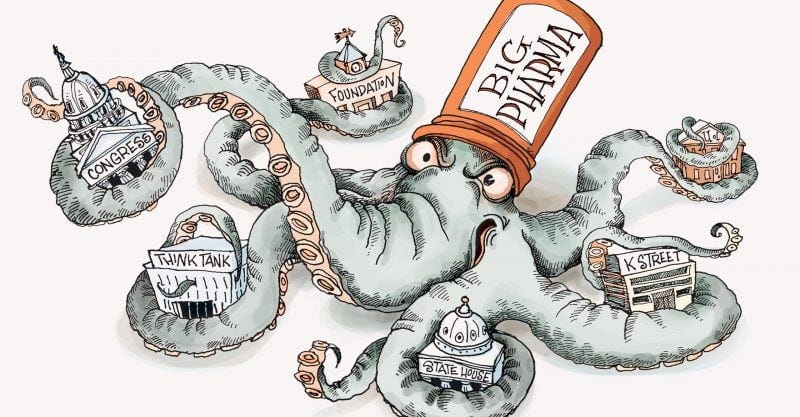Contaminated Shots: Why did Aspen Destroy 30 million J & J 'Vaccine' Doses?
What happened to tens of millions of 'potentially' contaminated COVID-19 vaccine doses that originated from a troubled manufacturing plant, dumped in South Africa?
Potentially contaminated J & J doses climb
Published in The Continent, reporter Laura Lopez Gonzalez recently wrote that Aspen Pharmacare Holdings Limited (Aspen) had been forced to destroy 30 million doses of J and J in June, not 2 million as initially reported.
Aspen was appointed to fill and finish the vials, but US authorities discovered that 60 million batches of the vaccine doses produced at Emergent BioSolutions factory in the US may have been contaminated before they were shipped to Aspen for finishing. It is not clear what quality control measures are in place, but of course, all such companies follow or are supposed to follow good manufacturing practices (GMP) and local laws—more of this to follow.
This revelation again raised questions whether these are the same doses that were ‘dumped’ at the US Emergent plant in April 2021 and then shipped to South Africa. According to Linda Gail-Bekker, who co-led local trials of the J&J vaccine in South Africa, the answer is no.
Transparency – Industry’s Holy Grail
There is no clarity on how 2 million doses became 30 million. When it comes to transparency, few industries are less open than the pharmaceutical companies.
According to Transparency International, in 2016, one in ten corruption investigations by US authorities involved pharmaceutical companies, which is significantly higher than the banking sector. In a WHO conference on 16 September 2021, Dr. Ayoade Olatunbosun-Alakija, head of African Vaccine Distribution Alliance, said that the fact that the true number of vaccines lost was not public knowledge was a testament to the pharmaceutical industry’s ongoing lack of transparency about the Covid-19 vaccine supply.
She added, “Why were African leaders not told that the vaccines they were paying for had to be destroyed and were therefore not in that supply chain? We need transparency.” In many cases, vaccines are paid for by African countries with loans and tax dollars, galvanizing the need for transparency in the acquisition process, she added.
Of course, when public health, pharma, and tax money merge more than ever, transparency isn’t some luxury discussed at a conference, but a demand by the public for an accounting of the use of public resources
Leaks versus non-disclosure agreements
Creating blocks to determine where contaminated doses actually end up, Gonzalez further tweeted that pharmaceutical companies won’t confirm which countries are buying their products. She says the reporting tracing system depends on leaks or unnamed sources because of non-disclosure agreements (NDAs). The alternative is what the companies themselves say, which, given the track record of this industry and what is at stake now, ironically, cannot be fact-checked. “Aspen referred The Continent’s queries to J&J, which had not responded at the time of publication.”
Good manufacturing practices masked in secrecy
SAHPRA registered the J and J vaccine in March 2021. The authorization is subject to a number of conditions, which includes that the vaccine should be manufactured under conditions of Good Manufacturing Practices (GMP) determined by SAHPRA and aligned with global best practices.
The manufacturing process of a vaccine and active pharmaceutical ingredient requires stringent quality checks to ensure that the product meets requisite standards. According to a #PfizerLeak, a reliable source revealed that one clause included in vaccine purchase agreements is that vials cannot be examined.
At the time of publication, SAHPRA had not responded to questions related to the contaminated vaccine doses:
1. What GMP and quality audits did SAHPRA initiate in respect to these J & J (and all) doses?
2. What did SAHPRA independently discover and advise the public about vaccine contamination?
3. What tracing systems were put into place to determine whether contaminated doses were in SA?
4. Were systems hamstrung due to NDAs signed and J and J's lack of transparency?
5. What measures have been put in place to protect the South African public from potential harm in the future?
Aspen under the health ethics spotlight
A few months ago, Aspen was viewed suspiciously because J and J made it a trade condition that it would only supply C-19 vaccine doses to South Africa if Aspen secured a signed fill and finish deal, raising questions of a monopoly during a pandemic. The Gqeberha-based company previously came under fire for price gouging and overpricing cancer medicines by up to 1500%. Their negotiation strategy was called "so aggressive as to threaten the direct supply of the drugs to the Italian market." Aspen avoided a significant EU fine by offering to drop prices, but Italy persisted and charged Aspen 5 million euros. Aspen, Roche, and Pfizer were also investigated by the Competition Commission in South Africa. Aspen’s shareholders include a diverse array such as Colonial First State Global Asset Management, Blackrock, Vanguard, trade union CEPPWAWU, and government employee pension schemes.
Where to from here?
This understated jab contamination debacle raises crucial public health and transparency questions, including just how much public funding went into these politicized deals, was anyone affected by these and other contaminated doses, and how these public health risks must be avoided in the future.
My article was originally published in 2021 here




